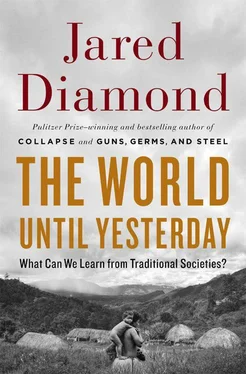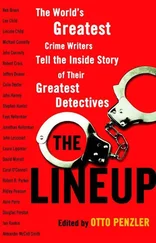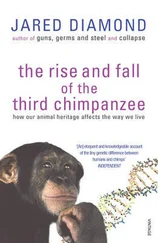Thus, if social scientists equipped with a time machine could have surveyed the world at any time before about 9000 BC, they would have found everybody everywhere subsisting as hunter-gatherers, living in bands and possibly already in some tribes, without metal tools, writing, centralized government, or economic specialization. If those social scientists could have returned in the 1400s, at the time when the expansion of Europeans to other continents was just beginning, they now would have found Australia to be the sole continent still occupied entirely by hunter-gatherers, still living mostly in bands and possibly in some tribes. But, by then, states occupied most of Eurasia, northern Africa, the largest islands of western Indonesia, most of the Andes, and parts of Mexico and West Africa. There were still many bands, tribes, and chiefdoms surviving in South America outside the Andes, in all of North America, New Guinea, and the Arctic, and on Pacific islands. Today, the whole world except Antarctica is divided at least nominally into states, although state government remains ineffective in some parts of the world. The world regions that preserved the largest numbers of societies beyond effective state control into the 20th century were New Guinea and the Amazon.
The continuum of increase in population size, political organization, and intensity of food production that stretches from bands to states is paralleled by other trends, such as increases in dependence on metal tools, sophistication of technology, economic specialization and inequality of individuals, and writing, plus changes in warfare and religion that I’ll discuss in Chapters 3and 4and in Chapter 9respectively. (Remember again: the developments from bands to states were neither ubiquitous, nor irreversible, nor linear.) Those trends, especially the large populations and political centralization and improved technology and weapons of states with respect to simpler societies, are what have enabled states to conquer those traditional types of societies and to subjugate, enslave, incorporate, drive out, or exterminate their inhabitants on lands coveted by states. That has left bands and tribes in modern times confined to areas unattractive or poorly accessible to state settlers (such as the Kalahari Desert inhabited by the !Kung, the African equatorial forests of the Pygmies, the remote areas of the Amazon Basin left to Native Americans, and New Guinea left to New Guineans).
Why, as of the year of Columbus’s first trans-Atlantic voyage of 1492, did people live in different types of societies in different parts of the world? At that time, some peoples (especially Eurasians) were already living under state governments with writing, metal tools, intensive agriculture, and standing armies. Many other peoples then lacked those hallmarks of civilization, and Aboriginal Australian and !Kung and African Pygmies then still preserved many ways of life that had characterized all of the world until 9000 BC. How can we account for such striking geographic differences?
A formerly prevalent belief, still held by many individuals today, is that those regionally different outcomes reflect innate differences in human intelligence, biological modernity, and work ethic. Supposedly, according to that belief, Europeans are more intelligent, biologically advanced, and hard-working, while Aboriginal Australians and New Guineans and other modern band and tribal peoples are less intelligent, more primitive, and less ambitious. However, there is no evidence of those postulated biological differences, except for the circular reasoning that modern band and tribal peoples did continue to use more primitive technologies, political organizations, and subsistence modes and were therefore assumed to be biologically more primitive.
Instead, the explanation for the differences in types of societies coexisting in the modern world depends on environmental differences. Increases in political centralization and social stratification were driven by increases in human population densities, driven in turn by the rise and intensification of food production (agriculture and herding). But surprisingly few wild plant and animal species are suitable for domestication to become crops and livestock. Those few wild species were concentrated in only about a dozen small areas of the world, whose human societies consequently enjoyed a decisive head start in developing food production, food surpluses, expanding populations, advanced technology, and state government. As I discussed in detail in my earlier book Guns, Germs, and Steel, those differences explain why Europeans, living near the world region (the Fertile Crescent) with the most valuable domesticable wild plant and animal species, ended up expanding over the world, while the !Kung and Aboriginal Australians did not. For the purposes of this book, that means that peoples still living or recently living in traditional societies are biologically modern peoples who merely happened to inhabit areas with few domesticable wild plant and animal species, and whose lifestyles are otherwise relevant to this book’s readers.
Approaches, causes, and sources
In the preceding section we discussed differences among traditional societies that we can relate systematically to differences in population size and population density, means of obtaining food, and the environment. While the general trends that we discussed do exist, it would be folly to imagine that everything about a society can be predicted from material conditions. Just think, for example, about the cultural and political differences between French and German people, not obviously related to the differences between France’s and Germany’s environments, which are in any case modest by the standards of worldwide environmental variation.
Scholars take various approaches towards understanding differences among societies. Each approach is useful for understanding some differences among some societies, but not appropriate for understanding other phenomena. One approach is the evolutionary one discussed and illustrated in the preceding section: to recognize broad features differing between societies of different population sizes and population densities, but shared among societies of similar population sizes and densities; and to infer, and sometimes to observe directly, changes in a society as it becomes larger or smaller. Related to that evolutionary approach is what may be termed an adaptationist approach: the idea that some features of a society are adaptive, and that they enable the society to function more effectively under its particular material conditions, physical and social environment, and size and density. Examples include the need for all societies consisting of more than a few thousand people to have leaders, and the potential of those large societies to generate the food surpluses required to support leaders. This approach encourages one to formulate generalizations, and to interpret changes of a society with time in terms of the conditions and environment under which the society lives.
A second approach, lying at the opposite pole from that first approach, views each society as unique because of its particular history, and considers cultural beliefs and practices as largely independent variables not dictated by environmental conditions. Among the virtually infinite number of examples, let me mention one extreme case from one of the peoples to be discussed in this book, because it is so dramatic and so convincingly unrelated to material conditions. The Kaulong people, one of dozens of small populations living along the southern watershed of the island of New Britain just east of New Guinea, formerly practised the ritualized strangling of widows. When a man died, his widow called upon her brothers to strangle her. She was not murderously strangled against her will, nor was she pressured into this ritualized form of suicide by other members of her society. Instead, she had grown up observing it as the custom, followed the custom when she became widowed herself, strongly urged her brothers (or else her son if she had no brothers) to fulfill their solemn obligation to strangle her despite their natural reluctance, and sat cooperatively as they did strangle her.
Читать дальше










